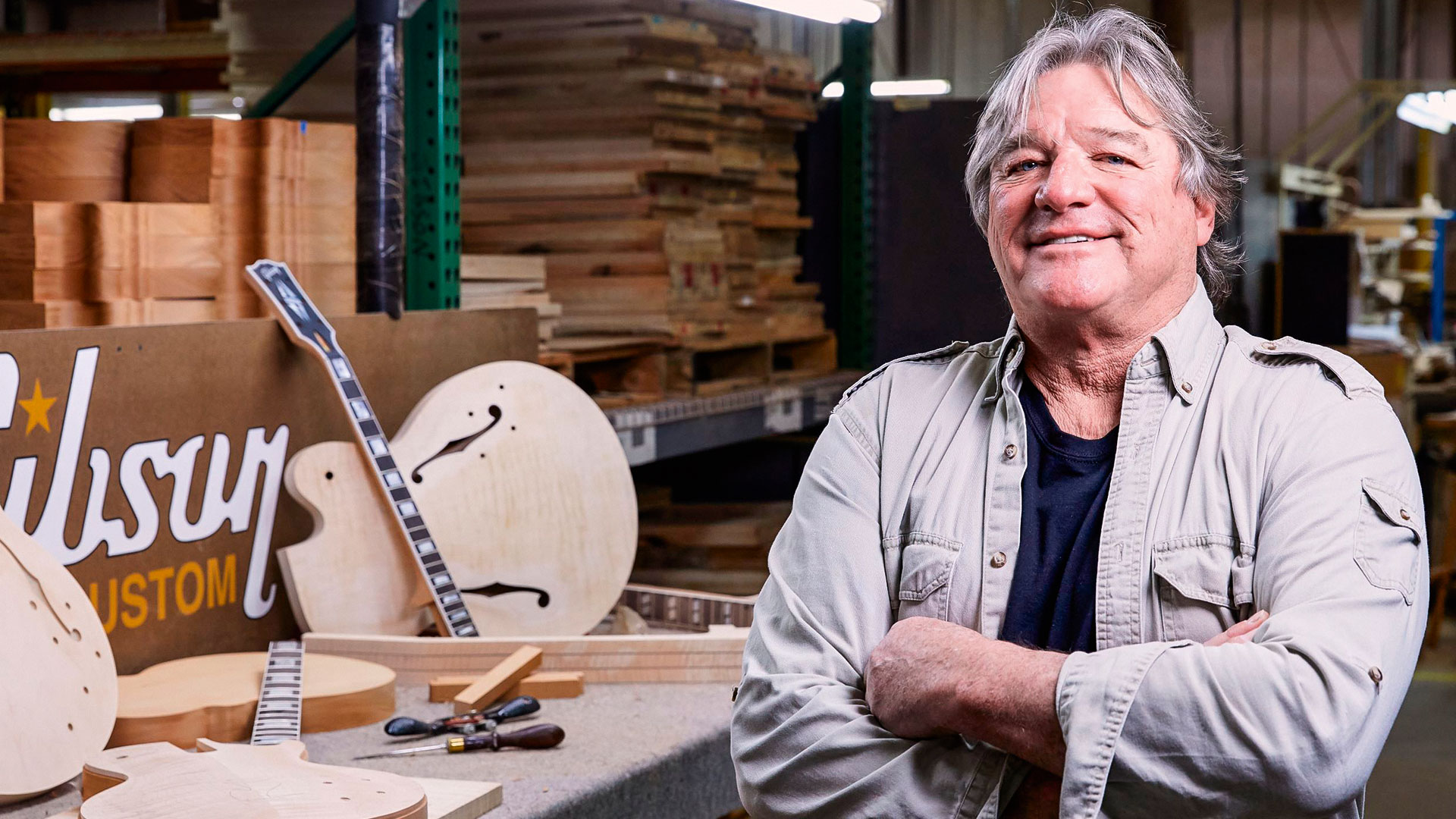
In the space of a few decades, pre-aged guitars have gone from industry joke to high art. A large part of that turnaround has been down to the work of Tom Murphy, whose work has elevated what was once a (quite literally) scattergun process into something more akin to historical restoration.
Murphy operated independently for many years, but as of 2020 was chosen to head up Gibson’s specially created Murphy Lab, sharing his innovative tools and techniques with a small crew of hand-picked employees.
The Custom Shop instruments they finish have become revered for their convincingly vintage look and feel, and many players will swear they sound better for the treatment, too.
Now, in collaboration with Gibson’s Bozeman, Montana “craftory”, the Murphy Lab is expanding its sights to take in a range of five pre-aged, period-correct acoustic models, including a 1933 L-00 parlour guitar, 1942 Banner J-45 and Jumbo Vintage, a 1957 SJ-200 flat-top and a 1960 Hummingbird.
This time, though, it’s not simply about perfecting the belt-buckle rash. As Murphy maintains, “we want all the attention paid to the sound”.
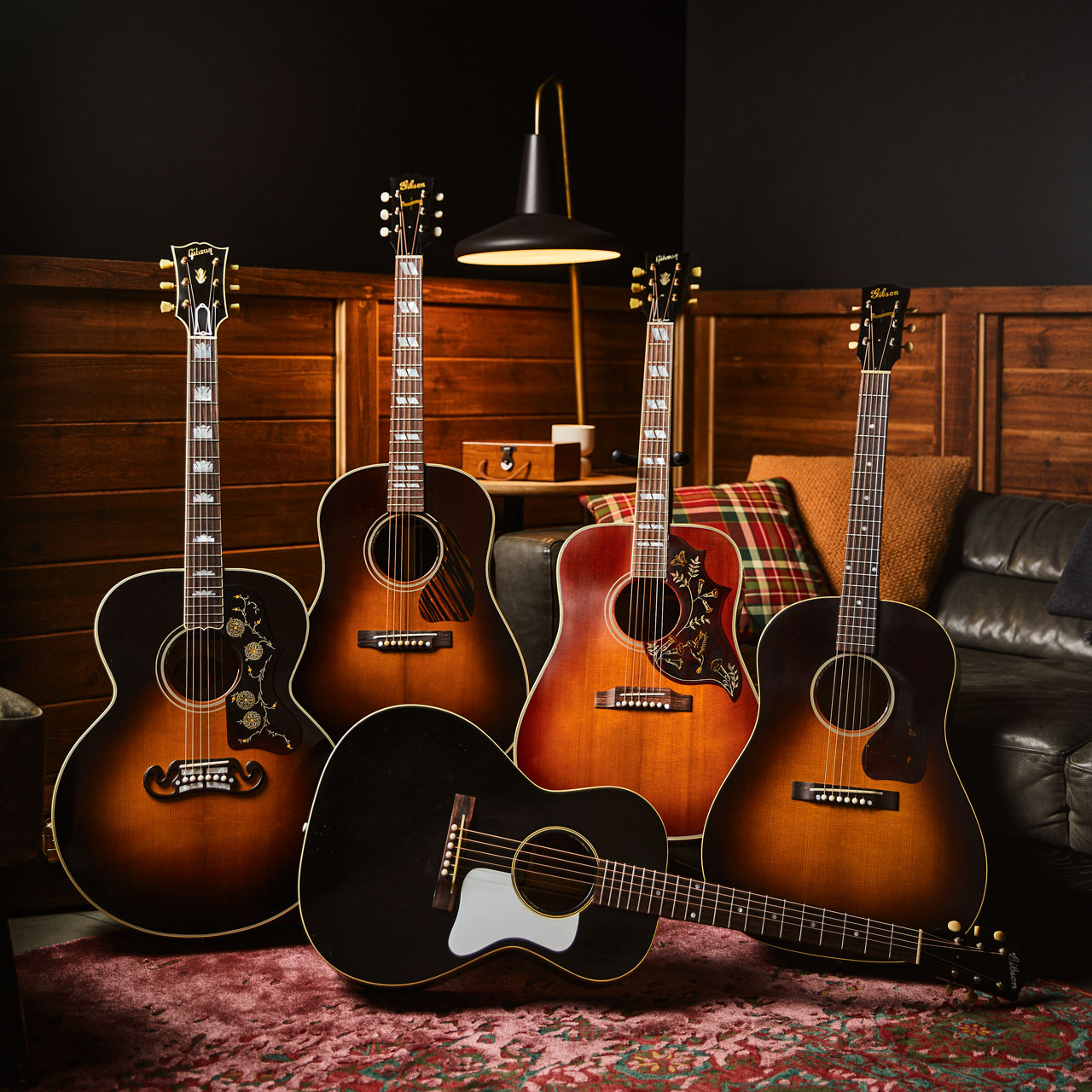
Could you provide some background on the work the Murphy Lab has been doing since it opened?
“Well, I’ve been doing some version of ageing to the finish of historic guitars for 25 years. As of 2020, when I came on full-time inside the Custom Shop, I developed a new method, which involves real checking of the lacquer, instead of the artificial checking I’d done for a long time. And it really just took the whole concept to another level – I was very excited about it.
My staff are craftsmen who I’ve taught methods of authentic arm wear, belt wear and distressing
“Gibson approached me about working with a group inside the factory, and the staff and I brought in that process. So my staff are craftsmen who I’ve taught methods of authentic arm wear, belt wear and distressing.
“Now there’s no more ‘Murphy aged’, it’s all Murphy Lab and there are four levels of ageing: ultra light, light, heavy and ultra heavy, and the distressing progresses through those levels. And, of course, now we have artist projects, where we copy the actual product: Greeny, the Kirk Hammett project [for instance].
“So the Lab has become really convenient as a way to frame that concept of ageing. Even though my name’s attached to it, I don’t have to do every single guitar. I look at every guitar, I inspect every guitar, I approve them, but we work as a team. So that’s the Murphy Lab.”
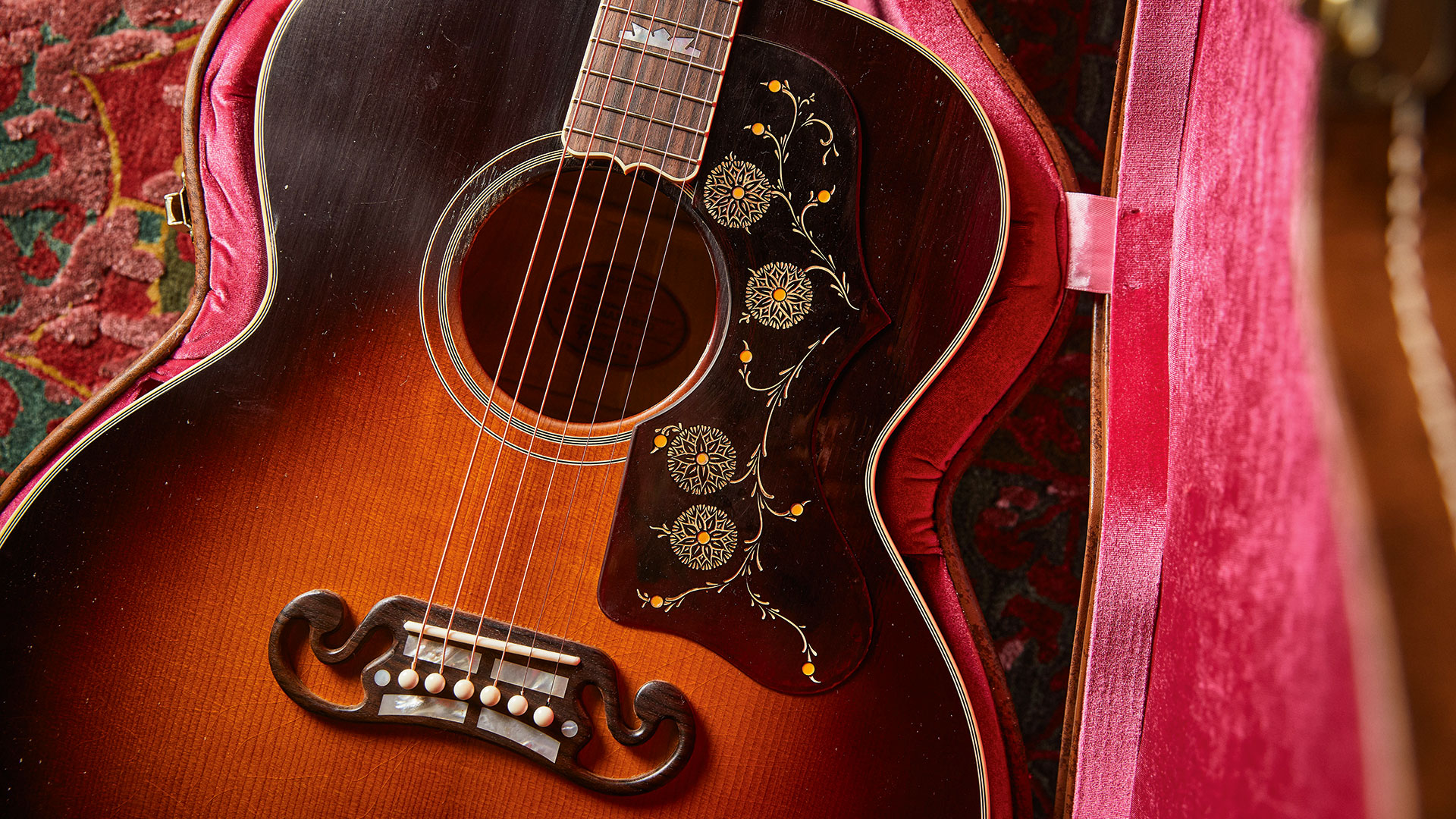
What state are the guitars in when they arrive at the Murphy Lab? Are they made in order for you to age them?
“We have one very important element and that is our proprietary finish. That finish has to go on our instruments or we can’t use them in the Lab. It allows us to execute the different procedures that make a guitar look old. It wears easily. We don’t peel paint off any more – we sort of chip it off and rub it and burnish the edges.
I didn’t do all the work: mother nature did a key part of it. So I’m super proud of what we’re able to do now
“When I was finishing the first Greeny of this Brazilian run, I was standing over the guitar and I said to Cesar [Gueikian, Gibson president and CEO], ‘That’s the best work I’ve ever been involved in.’ Meaning, I didn’t do all the work: mother nature did a key part of it. So I’m super-proud of what we’re able to do now.
“I appreciated getting to do what I did for all those years [before], but I knew for a fact every bit of it was artificial. I used to take a new guitar with a new finish and try to make it look old. Now I take a new guitar and put an old finish on it, because it responds like an old finish. It’s sort of fragile, but it feels great, feels old and allows us, in my estimation, much more authentic and realistic features that represent age.”
You’ve just unveiled the first Murphy Lab acoustics. What challenges did the acoustic line present compared with the electrics?
“It was thought early on [with the Murphy Lab], ‘Oh, we could do the acoustics!’ But in my mind, it was like, ‘Well, wait a minute. It’s not the same animal.’ Because some of the things we do to [an electric] guitar, I didn’t know if an acoustic guitar would really appreciate that!
Every time we put a jam or a nick in a guitar, it weakens the finish, and the checking will sort of come out of there
“But a couple years ago, they sent down a few pieces from Montana [Gibson’s acoustic facility] and I sort of carefully painted them, applied the finish and did some distressing to a J-45. I will say this: every time we put a jam or a nick in a guitar, it weakens the finish, and the checking will sort of come out of there.
“So I did that to the J-45 and the wear looked great, but then people started playing it and we realised how great it sounded. We determined, ‘Boy, with that checked finish, the acoustic guitar – which is a box that vibrates – really rings.’
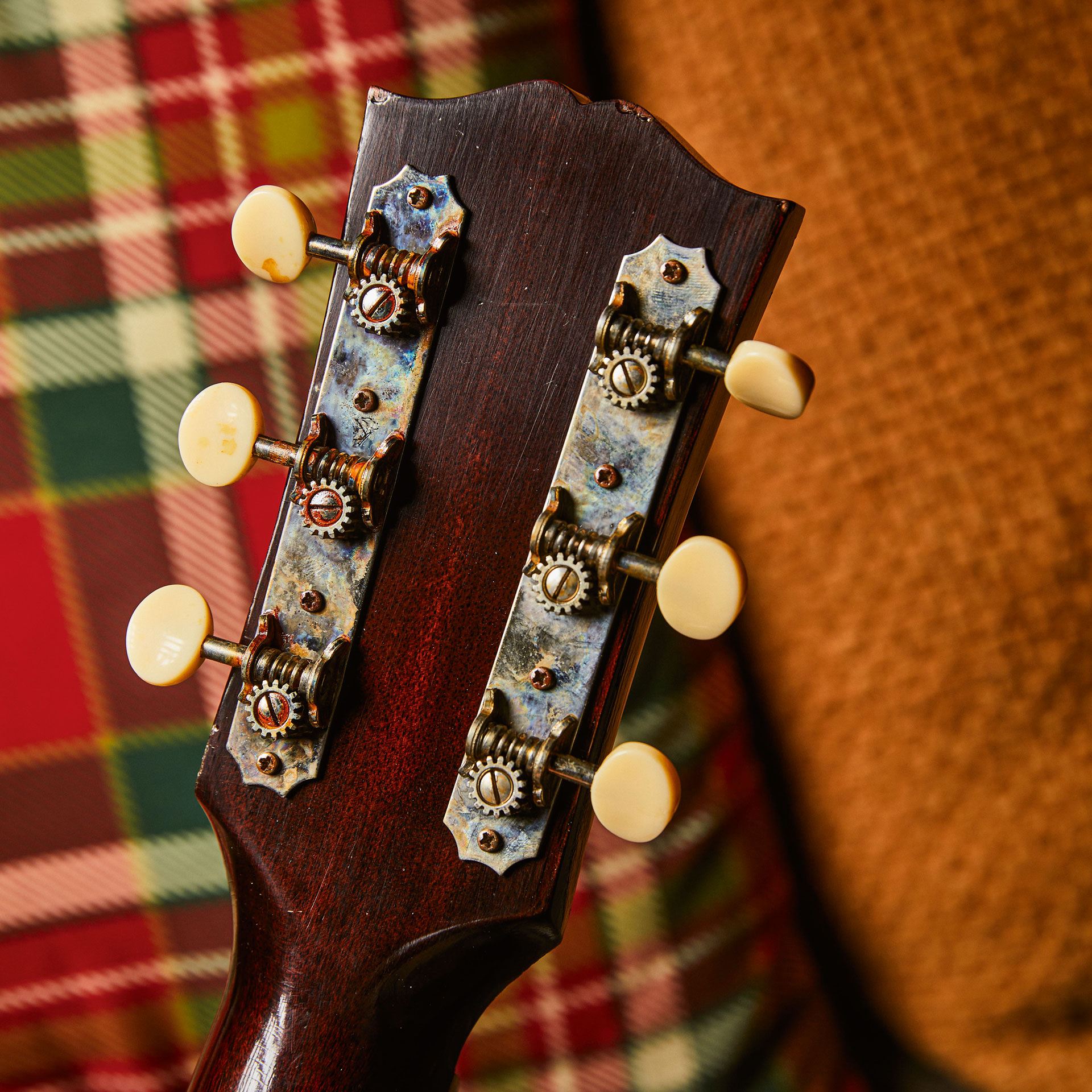
“It encouraged us to more seriously pursue the idea. So now I’ve been to Montana twice. And an engineer has been down to the Lab twice. His name is Madison Swords and he’s really an asset to the company. He undertook the engineering of the Murphy Lab and learned specific stuff from me and the materials that we use.
“And, boy, these Montana acoustics coming from the Murphy Lab, they sound awesome. Does our finish make them sound awesome? Not really, but it lets them sound awesome.
“You can just feel the guitar vibrate. [That’s one of the reasons] we just have a light ageing treatment currently, because that’s not what it’s all about. On those guitars, it’s about the sound.”
Compared with a new model, vintage acoustics are a lot lighter, because all the moisture has gone out of the wood. Is there any attempt at Gibson to simulate that?
You want to tap on a top you’re building a guitar with and make it feel and sound really brittle and bright
“Yeah, they’re torrefied. As we call it, we ‘bake the tops’ – the spruce. Wood, especially spruce, has sap. If you’ve ever felt the sticky sap from a Christmas tree, well, you want that stuff out of the wood. They call it ‘hardening the cell walls’ – [essentially] drying out the moisture and the sap.
“You want to tap on a top you’re building a guitar with and make it feel and sound really brittle and bright. Our finish just lets the guitars sound great. The sound comes from their design and our finish doesn’t impede that at all. It actually helps with it, we feel.”

The other element that might alter the sound of a vintage model is the pickguard. The original pickguards would have been cellulose, correct?
“Yes, and they are on all the [Murphy Lab] pre-’50 guitars, including the J-45. In Montana, Madison, who I spoke of before, he’s just a brilliant guy. He found a way to make the pickguards himself and capture the features on, say, a J-200 ’guard – the flowers and such.
“He pours the resin on top of a die that he has made himself from an original ’guard and then they’re hand-painted and hand-buffed. It can make a difference when a ’guard is really large and it’s stuck to the top of a guitar. But the materials that I see them using, they have no dampening effect that I can see.
“We are working on an adhesive at the moment, because a Hummingbird ’guard has three points on it and those points are hard to keep down. The old ones lift, too, but we’re trying to eliminate that problem.”
The range is currently limited to five models. Is there another acoustic that you have got your sights set on?
I think they’re considering an Ultra Light offering, which we have in the Murphy Lab here... I’d like to see that on the acoustic, because we want all the attention paid to the sound.
“Well, I happen to own an Advanced Jumbo with the treatment and it’s really amazing. That guitar is known for its sound, with the rosewood back and the scale. That’s from, like, ’36 and that will be really a cool model to add to the line eventually. It was decided not to offer it yet, but it obviously would fit with the whole concept, for sure. So we’ll see how that goes.
“I’m not involved in product development, so they will decide when and which ones to add, as well as maybe different aging treatments. As I said, we wanted to minimise that right at the beginning, so people didn’t think it was all about scratches and severe pick wear. It’s not necessary.
“I think they’re considering an Ultra Light offering, which we have in the Murphy Lab here, which has no damage, no chips and no scratches. It just has the checked finish and the lightly aged hardware. I’d like to see that on the acoustic, because we want all the attention paid to the sound.”
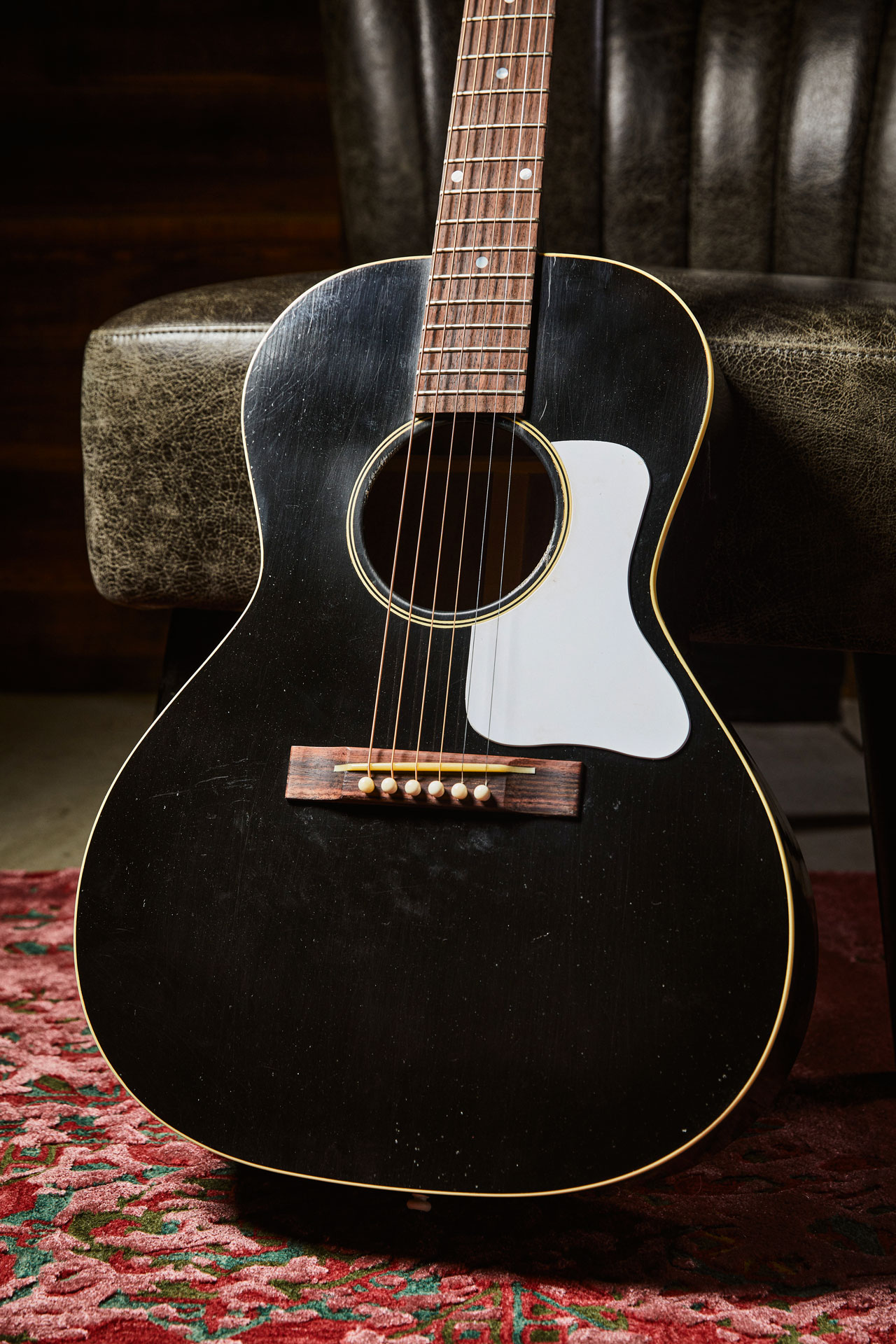
Do you think that acoustic guitar players tend to look after their guitars more than electric players do?
“Yeah. When people ask, ‘What’s the difference in ageing an acoustic, as opposed to an electric?’ Well, the same things don’t happen to acoustic that happen to an electric. The way they’re played, standing up all the time with an electric – with a belt buckle, or blue jean rivets, or guitar stands, or microphone stands.
“On an acoustic, you’ll see typical pick wear, because of the strumming, around the soundhole and you won’t see severe damage to the back of the guitar as much, or the rims.
On an acoustic, you’ll see typical pick wear around the soundhole and you won’t see severe damage to the back of the guitar as much... They don’t get bumped as much
“They don’t get bumped as much. I even say that about the ES models, because we have an ultra heavy ES-335 in our menu from the Lab, but I’ve never seen one that looks like that.
“I’ve seen pictures, but typically an ES-335 or 345 or 355, they were taken care of. They played rock ’n’ roll on them, but not as much as with Les Pauls, and so on.
“Acoustic aficionados really appreciate what an acoustic guitar does, though, which is its sound. It makes a different music and it does all the work. On electric guitar, you can plug it into pedals and amplifiers and so on, but an acoustic guitar, when one sounds great, it’s just really lovely, and you tend to treat it a little bit nicer.”
With the acoustics, if you add more relicing you’d have a Willie Nelson tribute!
“Yeah, that’s unique! I mean, Willie’s guitar is iconic and represents all of those nights of playing, and that’s why he wants to keep playing that guitar. That’s a gut-string guitar that’s played with a pick and has a pickup on it. That’s not typical. But, yes, everybody knows what Trigger looks like.
“I don’t think we’ll go that far. Although I saw a picture from Montana of a prototype of a 1947 J-50 that was a replica of Bob Dylan’s natural J-50. And it was fantastic and very, very warm-looking. That hasn’t been offered yet. It was just done as a one‑off, but it was very, very cool.
“But I’m excited about the acoustics, [especially] when you hear them. I’ve been saying recently, instead of me telling people [about them], ‘Let me just hand you one, then you can tell me about it!’’
- For more information on the Murphy Lab range, head to Gibson.







